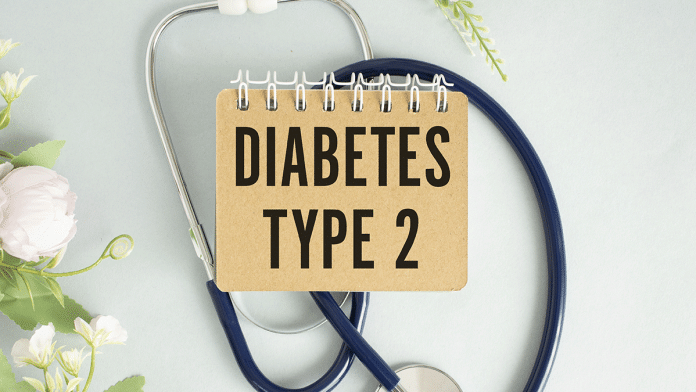Diabetes type 2 is a long-term condition that affects adults and middle-aged people, mostly. Type 2 diabetes is more common than type 1 diabetes. It is associated with insulin resistance resulting in hyperglycemia.
Insulin is a hormone produced by the pancreas, and it signals the cells to take up the glucose from the blood. When you take a meal, level of sugar and nutrients rises, during digestion, carbohydrates break into simpler sugar like glucose. Glucose is necessary for energy and to perform various functions of the body. But for this, glucose should be absorbed from the bloodstream into the cells. Insulin is the precursor of this step; it signals the cell that it’s a time to take up glucose. But in type 2 diabetes, body cells get resistant from the effect of insulin known as insulin resistance. Once this condition develops, glucose starts to build up in the bloodstream resulting in elevated glucose levels. Due to high levels, the pancreas begins to produce more and more insulin to balance the glucose level. Over time pancreas gets exhausted and cannot keep the demand for insulin body requires, ending in high glucose level in blood.
The main factor of diabetes 2 is genetics; it runs in families. Obesity also markedly increases the risks of diabetes 2. Cholesterol, high blood pressure, stress and, more importantly, gestational diabetes (which occur at pregnancy) can cause diabetes 2.
The symptoms of type 2 diabetes highly resemble type 1 diabetes symptoms. These symptoms can be mild or absent altogether. Milder symptoms are excessive thirst and dry mouth, frequent urination, lack of energy, tiredness ,slow-healing wounds, recurrent infections in the skin, Blurred vision, tingling or numbness in hands and feet. Patients can live for several years without getting diagnosed. As the disease advances, the symptoms become more severe and potentially dangerous.
No time to read? watch this video….
Several complications are associated with type 2 diabetes, like atherosclerosis. The fat deposits in arteries lead to the hardening of arteries, which interferes with the blood flow to various organs like the heart, brain, etc. It increases the risk of heart attack and stroke.
Diabetes type 2 increases the risk of severe eye diseases like glaucoma and cataract and may damage the blood vessels of the retina. Hearing problems are also very common in people with diabetes.
Type 2 diabetes also increases the risk of getting Alzheimer’s disease; the higher the imbalance of glucose, the greater is the risk of getting Alzheimer’s.
Diabetes nephropathy is another complication. High blood glucose levels and blood pressure damage the vessels of the kidney. When the blood vessels are damaged kidney doesn’t function properly, and wastage, fluids started buildup in your blood instead of leaving the body.
You can prevent diabetes by adopting a healthy lifestyle. Diabetes 2 is associated with a lack of physical activity, so exercise daily and make yourself active. Obesity is also a precursor of diabetes 2, manage your weight by a healthy and balanced diet. Reduce consumption of refined carbohydrates and sugars. Take foods with low glycemic, whole grains, fiber, protein from poultry, and a menu full of omega-three fatty acids. FIshes are the rich source of omega-three fatty acids. Don’t overeat, take fewer portions of your food, and eat it at the same time every day.
In some cases, alterations in lifestyle are sufficient to keep your glucose levels controlled, but in some, you have to take medications to control diabetes.
Worrying should never be an option for any problem because, for every issue, there must be a solution present, and for diabetes, it is a healthy lifestyle.
Until Next Time,
Team Doctor ASKY!





















